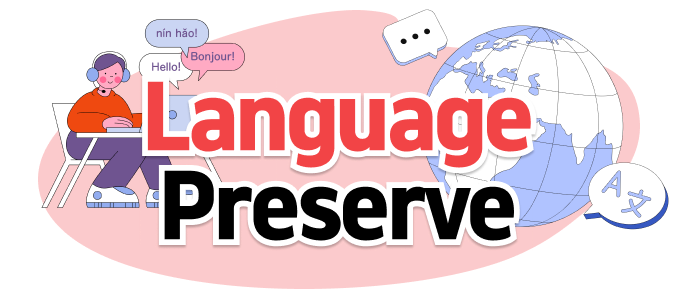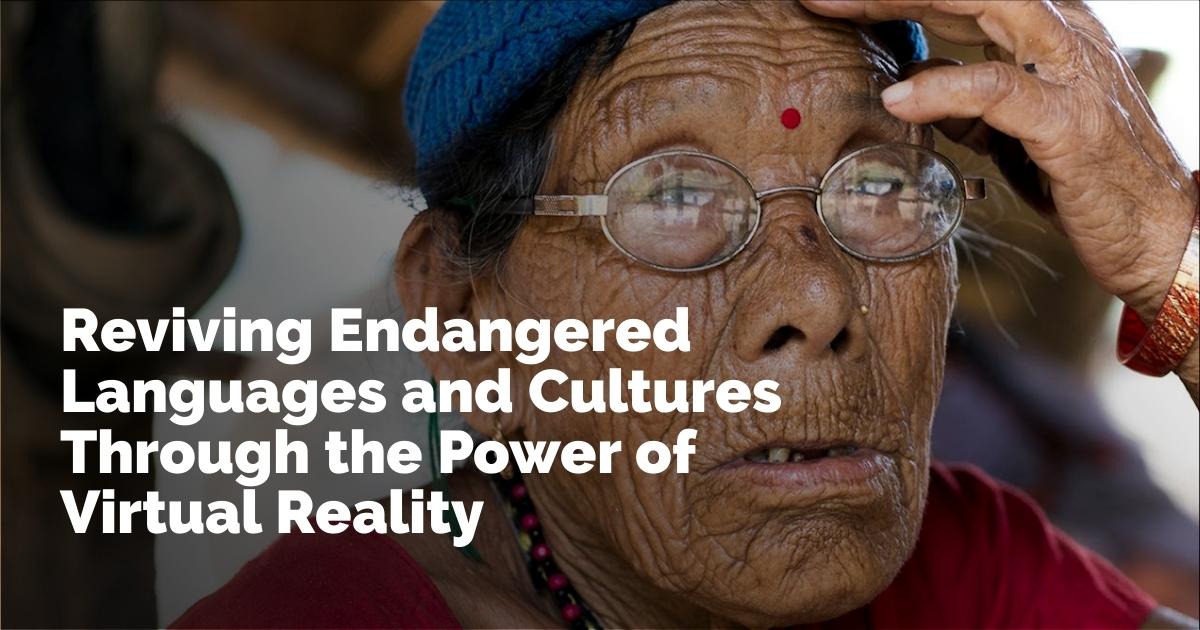How Virtual Reality Could Help Revive Endangered Languages and Cultures
Every two weeks, a language teeters on the brink of extinction. The United Nations has estimated that at least half of the approximately 7,000 spoken languages worldwide may either vanish or become critically endangered by the end of the century. This potential loss signifies not just the disappearance of dialects but also a profound erosion of cultural diversity and history.
Noam Chomsky encapsulated the essence of languages by stating, "A language is not just words. It's a culture, a tradition, and a unification of a community, a whole history that creates what a community is." To combat this threat, a unique collaboration is underway between scholars at the StoryLab research institute at Anglia Ruskin University and their creative partners at NowHere Media. Together, they are delving into how virtual reality (VR) and immersive storytelling can aid in the revitalization of endangered indigenous cultures and languages.
The Power of Immersion in Revitalizing Languages
Our research has suggested that when immersive stories are crafted in collaboration with communities, they can serve as a potent vehicle to reinforce group identity and ensure the long-term preservation and guardianship of cultural heritages. A testament to this is the Kusunda VR experience, developed by NowHere Media before our project began. This immersive interactive film encourages audiences to learn essential words from the Kusunda language, which is perilously close to extinction in Nepal. Through the experiences of the Kusunda people, viewers are offered a glimpse into their nomadic lifestyle and language, brought to life through interviews with the language's remaining speakers.
The developers partnered closely with Lil Bahadur, among the dwindling 150 Kusunda speakers remaining, and his granddaughter Hima, to authentically capture and preserve their world and language. Techniques like volumetric filming and photogrammetry were employed to craft a realistic 3D environment, made accessible through virtual reality. The use of voice-based interactions allows viewers to engage with and learn elements of the Kusunda language.
Lil's journey from the hunter-gatherer lifestyle to city life nearly cost him his mother tongue. Yet, his granddaughter Hima is fervently committed to preserving their linguistic and cultural legacy. Hima's passion stems from her belief that the loss of the Kusunda language would erase the presence of the Kusunda people themselves. "We'll lose our identity. That's why I want to save our language," Hima shared.
Hima began her linguistic journey by learning from Gyani Maiya Sen-Kusunda, an elder and one of the last fluent speakers of the language. Despite Gyani Maiya's passing in 2020 during the production of the Kusunda VR project, her legacy as a language preservation ambassador lives on.
Exploring the Role of Immersive Technology
The exploration of VR's potential to rejuvenate endangered languages has been supported by a grant from the British Academy awarded to StoryLab. Our research endeavor, "Reviving Kusunda," investigated the effectiveness of an interactive VR experience versus a conventional short film that was developed during the project. The primary aim was to assess how immersive technologies may engender emotional understanding compared to traditional film formats.
Over the past century, audio-visual mediums like film have played a pivotal role in documenting and preserving cultural heritage, including languages and traditional art forms. However, with the advent of new technologies such as virtual and augmented reality, there is a keen interest in evaluating how these innovative forms compare with established audio-visual methods.
Feedback from our research participants, comprising both Kusunda community members in Nepal and individuals in the UK, illustrated a distinct preference for VR experiences. Participants emphasized the importance of interactivity and immersion in fostering engagement. They noted that being an active part of the story, rather than a passive observer, was instrumental in reviving the rich stories and memories of the past.
The immersive VR experience created a sense of interaction and emotional resonance, making participants feel like characters within the narrative and generating a strong connection to the subject at hand. This immersive element was crucial to "feeling" the reality of the Kusunda people's lives, opening new doors for VR's potential in the revival of endangered languages and cultural heritages.
Beyond the Kusunda: Broader Applications of Immersive Storytelling
The success of the "Reviving Kusunda" project has propelled StoryLab into a leadership role in a €3 million Horizon Europe project known as "Revive." This initiative tackles the preservation of two endangered European languages: Griko, found in certain regions of southern Italy, and Cornish, indigenous to Cornwall in the southwest of England.
The "Revive" project unites an international consortium of academic and industry partners to systematically explore the incorporation of immersive technologies, data visualization, archival research, and collaborative creation for the protection of Europe's linguistic heritage.
The project's objective is to host immersive, interactive experiences in museums and visitor centers, enhancing cultural awareness and offering engaging educational tools for formal language learning in schools and colleges. The ultimate goal is to instill this appreciation and knowledge within future generations.
Participants from the "Reviving Kusunda" initiative universally recognized how VR could uniquely animate intangible heritage and make it tangible and real. As one Kusunda community member reflected, "When I watched the VR today, I felt like I was witnessing the stories my grandmother used to tell me. They were alive before my eyes, as if they were truly real."
Conclusion: The Future of Language Preservation Through Technology
The utilization of virtual reality technology holds vast promise in reviving and preserving endangered languages and the cultural narratives they encompass. By fostering an emotional connection and participatory engagement, VR can offer a novel approach to keeping cultural legacies alive for future generations. As we move forward, the integration of immersive storytelling into language preservation efforts can help ensure that languages, and the rich tapestries of culture they carry, are not lost to the sands of time.
출처 : Original Source

